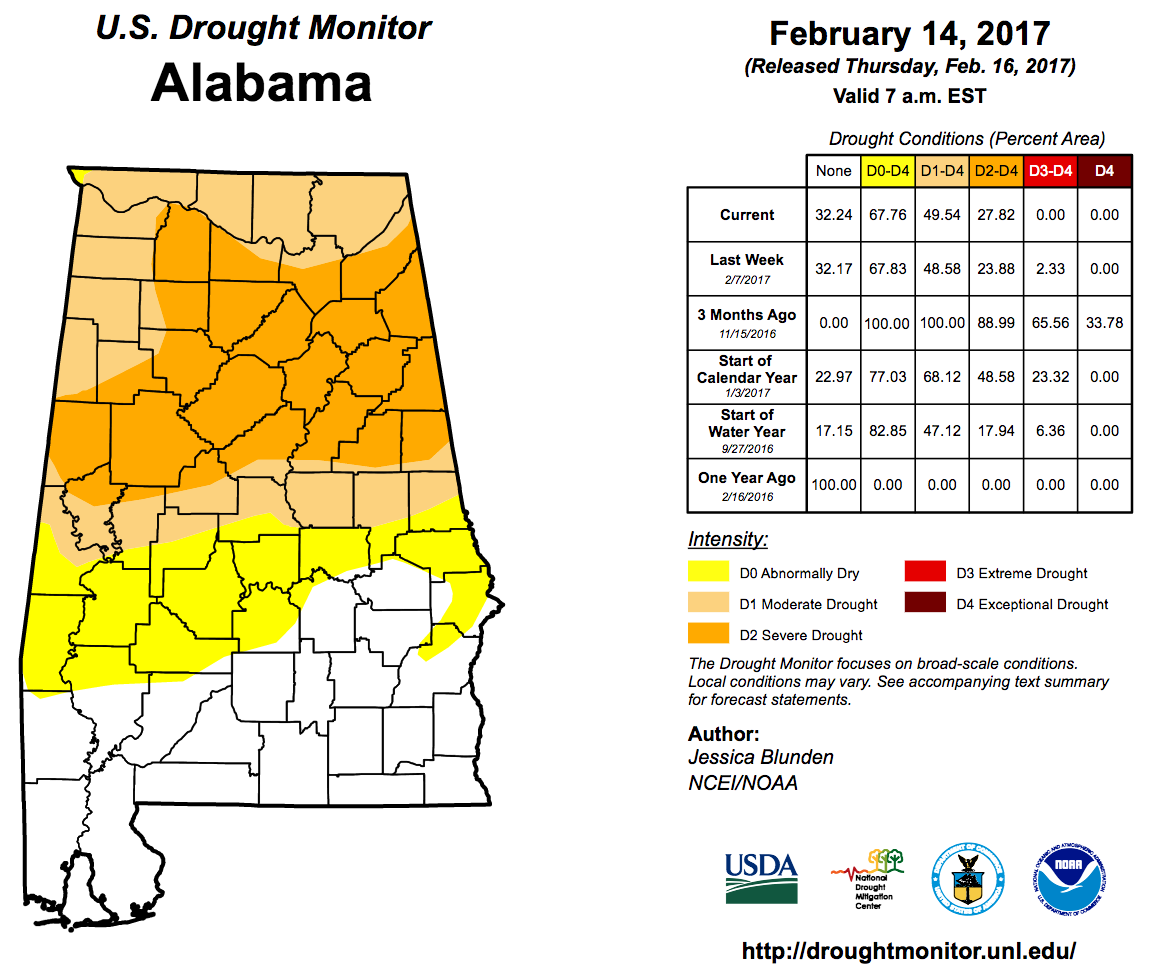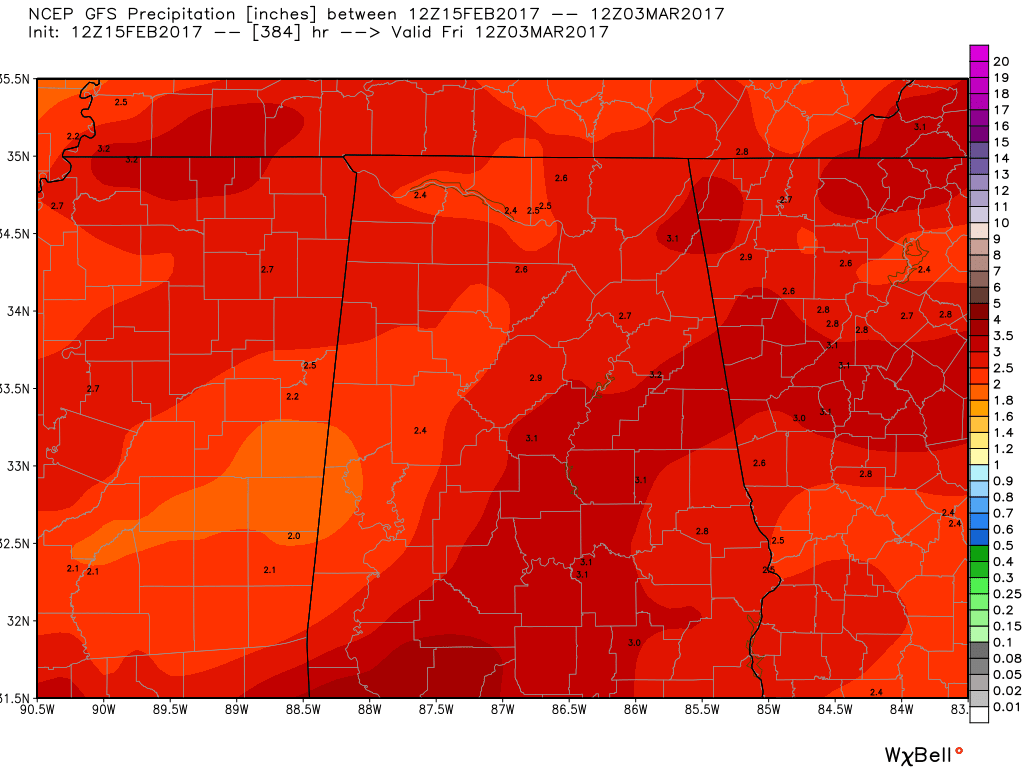The Latest On Alabama’s Drought Situation: 2/17/2017
Some great news… As of the latest U.S. Drought Monitor that was released on Thursday, not a single part of Alabama is defined in extreme or exceptional drought conditions. Much of the northern half of Central Alabama still remains in severe drought conditions, but that area has reduced from over 27% of the state to over 23%. The rest of North Alabama remains in moderate drought conditions. South Alabama is mainly out of any drought conditions, but the northern parts are still abnormally dry.
Even though there was enough improvement during the last 7 days to remove the extreme drought conditions off of the map, rainfall totals averaged less than 1 inch only provided small changes to the conditions across Central Alabama.
Here are the precipitation totals (through 2/15/17) for a few select cities in Central Alabama…
Birmingham
2017: total 8.94 in ….. avg 7.21 in ….. surplus 1.73 in
deficit/surplus since 1/1/2016: -11.68 in
Montgomery
2017: total 13.00 in ….. avg 7.47 in ….. surplus 5.53 in
deficit/surplus since 1/1/2016: -6.04 in
Anniston
2017: total 9.48 in ….. avg 7.18 in ….. surplus 2.30 in
deficit/surplus since 1/1/2016: -15.24 in
Tuscaloosa
2017: total 10.24 in ….. avg 8.18 in ….. surplus 2.06 in
deficit/surplus since 1/1/2016: -12.28 in
Calera
2017: total 10.18 in ….. avg 8.43 in ….. surplus 1.75 in
deficit/surplus since 1/1/2016: -2.73 in
Troy
2017: total 15.69 in ….. avg 6.91 in ….. surplus 8.78 in
deficit/surplus since 1/1/2016: -2.68 in
As you can see, even though we are in a surplus situation for the beginning of 2017 so far, all of Central Alabama are still trying to recover from the deficits from 2016.
Back in November, the USDA reported that many ponds and streams that were supplying cattle producers and farmers with much needed water were drying up. Water had to be hauled in from elsewhere to replace what was missing nearby. Farmers had been unable to plant winter crops due to the water deficit. Recent reports do show that conditions have improved some, allowing winter pastures to be stabilized, and cattle were shown to be in fair condition. Hay continues to be an issue for some locations.
The fire danger has diminished across Central Alabama, and the statewide burn ban has been rescinded. Even though that is the case, many pine trees in the area could be infested with pine beetles and could die due to the drought. The State Forester continues to urge people to use the proper safety precautions while burning outdoors.
Stream flows have decreased again and are currently running near to below normal at most sites, according to the latest USGS Stream Gauge Data. Most major reservoir pool levels have remained fairly steady during the past week and remain near their normal winter levels. Voluntary and mandatory water restrictions are still in effect in some areas, but some restrictions have been lifted or eased recently. Periodic rainfall will need to occur for stream flows and reservoirs to remain at these levels or they could quickly return to below normal if prolonged dry conditions occur.
According to the latest GFS model run, we’re going to get a little bit of help in the rainfall department over the next 16 days. Most of Central Alabama is modeled to receive between 2 to 3 inches. We still need much more than that to help erase the deficits left over from 2016.
Category: Headlines




















